No shortage of talent on Day 1 of the Australian Open as some of the best in mixed doubles got their main draw action started a day early.
By Aaron Wong, Badzine Correspondent live in Sydney. Photos: Badmintonphoto (archives)
Insufficient fluid causes headache
Badminton requires fluid. There’s much in-take of it in a sport where the projectile must be prevented from touching your side of the court in order to win. Perspiration follows without saying. Fluid partnership is also necessary. Two top ten players nearly faced early exit due to lack of the third kind.
For a second time in two weeks, world #6 Kim Ha Na in her alternative pairing with Choi Sol Gyu (pictured) encountered Annisa Saufika / Ronald Ronald, and it was beginning to look like one way traffic again in favour of the Indonesians, who were 2016 New Zealand Open champions.
The last match of the day proved to be a thriller as Kim grew in confidence at trading straight net shots with the opponent at the net. The Indonesians kept reeling the score back close but Saufika began feeling the pressure from Kim and the pace dictated by Choi. The Koreans prevailed 16-21, 21-17, 21-18.
I’ll show you
With a healthy dose of coaching, Indonesia’s Debby Susanto in an alternative pairing with normally men’s doubles specialist Ricky Karanda Suwardi (pictured) managed to overcome Cao Tong Wei / Ou Xuanyi 13-21, 21-14, 21-11.
Still, this Indonesian mixed pairing appears unconvincing and the first game is telling. Suwardi’s general instinct is to hit long and flat and manage himself which isn’t ideal for his short-statured partner as she ends up frequently having to be at full lateral stretch having to save shots.
The turnaround came about in the second game once Suwardi evinced more light and shade in the strength of his flat pushes. In addition, Susanto applied a combination of intelligent minimal defence as well as proactively dashing into position, sort of to show her partner where she can be most advantageous.
Death by a thousand cut drop-shots
The difference in quality between Grand Prix and twice Grand Prix Gold champions was illustrated when Vietnam took on China’s 2016 World Junior champions, who’ve transitioned smoothly onto the senior circuit.
Du Yue / He Jiting executed the most fluid mixed doubles formation of the opening day, displaying superb understanding of one another’s roles and capitalising on opportunities with efficiency. Even when their opponents were in position, the drop-shots from both Chinese players were either entirely deceptive or often produced mis-hit returns that weren’t high or deep enough into court.
On the other hand, 2016 Canada Open champions Pham Nhu Thao / Do Tuan Duc (pictured) were hapless in the first game and hampered in the second game on the unevenly lit Court 3. No longer being a ‘Grand Slam’ event means the Australian Open is relying on standard stadium lighting without spending extra thousands of dollars as when it had to adhere to Superseries illumination requirements.
Not all is lost
Despite losing in his more successful discipline, 6-21, 15-21, the clearly intelligent Do Tuan Duc nevertheless impressed as he immediately summoned extra might and speed to narrow the gap in offense, defence, court coverage which in turn steeled his partner Pham’s confidence at the change of sides against the also physically stronger Chinese.
Had Do’s comeback happened on any of the other three courts there was potential to head into a deciding game. None of the other pairs that took the first games but ultimately lost their matches showed anything resembling the same dramatic resolve, and necessarily, the technique to back it up.
Thai pair Supissara Paewsampran and Pakin Kuna-anuvit (pictured) led promisingly past the interval of both games but were overpowered in the closing stages as Li Yinhui / Wang Zekang targeted the defences of their female opponent, 21-18, 21-14.
Like Do, Pakin Kuna-anuvit’s self assurance remained high and robust throughout the match as evidenced by his unperturbed defence and timing on shots. Such traits are admirable and speak louder than the temporary loss.
![AUSTRALIAN OPEN 2018 Day 1 – Close mixed encounters of the 3rd kind of fluid No shortage of talent on Day 1 of the Australian Open as some of the best in mixed doubles got their main draw action started a day early. By Aaron […]](http://www.badzine.net/wp-content/uploads/ngg_featured/20170328_1549_IndiaOpen2017_BPYL2715_featured.jpg)
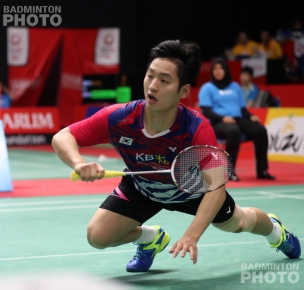
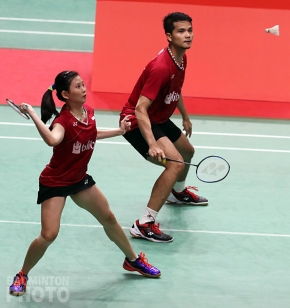
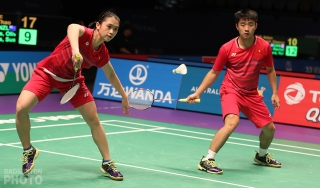
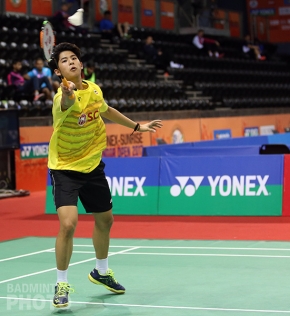

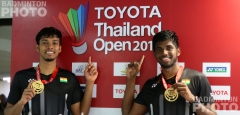
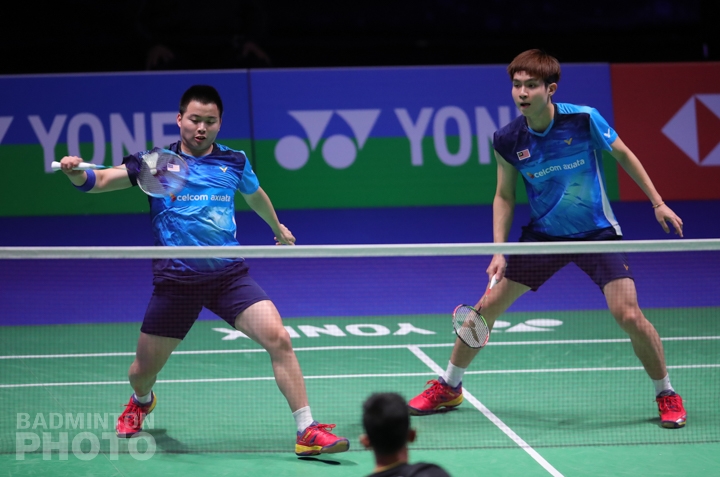
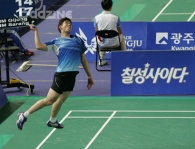
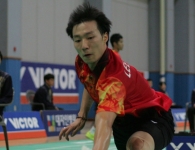

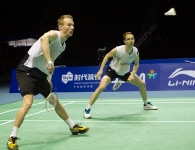
Leave a Reply